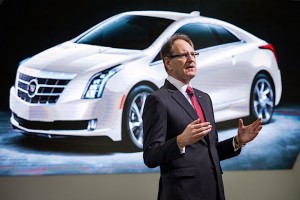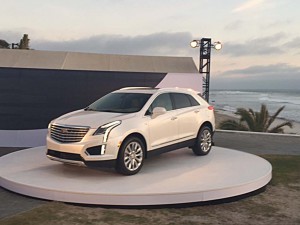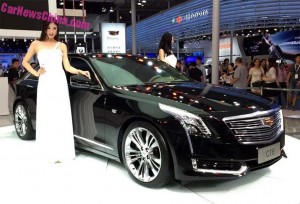Cadillac chief Johan de Nysschen is proving himself to be a “glass full” kind of guy. Despite ongoing struggles in the U.S., he is optimistic General Motors’ luxury brand’s revival is “proceeding according to plan.”
Of course, it helps to know that Caddy is rapidly gaining ground in China, the world’s largest market – which also happens to be generating more sales than the U.S. these days. There’s also the fact that the new XT4, a critically needed new SUV will be in dealer showrooms late this year, with another new product set to roll out every six months through at least the end of 2020.
“At the conclusion of this first phase of the plan, Cadillac will be armed for the first time with a family of premium crossover vehicles, positioning us well to exploit market preferences,” de Nysschen said during a presentation to the Automotive News World Congress.
A glass-half-empty kind of guy might be far less upbeat about the way things are going. For one thing, Caddy’s long promised revival has been stuck in low gear for several years in the U.S. and actually seemed to slip into reverse in 2017 as its sales slipped 8%, an even bigger decline than the overall American market.
(Cadillac takes aim at new sales record. Click Here for the story.)
Several recent products, notably the CT6 flagship, have struggled to gain traction. And the South African-born de Nysschen has had to make major shifts in the bold product roll-out strategy he planned when he took over Caddy in 2014. Sedans, including an update of the CTS, will remain part of the portfolio. But the brand will now have fewer passenger cars – several well received concept vehicles no longer set to go into production – but the XT4 will be one of an assortment of crossover-utility vehicles Cadillac will gain, instead.
Of course, Caddy is by no means the only luxury brand having to cope with rapid changes in the industry. At the North American International Auto Show this week rival Lexus revealed the LF-1 Limitless Concept, which is conceived as a crossover counterpoint to the brand’s recently updated flagship sedan, the LS. General Manager Jeff Bracken wouldn’t confirm production plans but told TheDetroitBureau.com, “We clearly have a gap at the high end of the market …we have to fill.”
Cadillac’s XT4 will slot just below the XT5 model introduced just a year ago, a segment that is growing fast in both the U.S. and other key Caddy markets. That could give even more impetus to the brand in China, where the lack of a full range of utility vehicles hasn’t been as much of an anchor as it has been in the States.
In fact, Caddy actually saw global sales – which largely means the U.S. and China these days – jump 15.5% in 2017, and the marque is looking for China alone to deliver sales of 200,000 vehicles this year.
(Click Here to see more about the success of Cadillac’s subscription service.)
At home, de Nysschen’s team isn’t sitting around waiting for the wave of new product. Cadillac is experimenting with ways to expand the brand’s appeal with creative marketing and sales strategies. That includes the Book by Cadillac program that allows a luxury motorist to subscribe, rather than buy or lease a vehicle. Originally limited to New York City and now expanding to other markets, such as Los Angeles, it offers a fixed price package in which a Caddy customer can swap in and out of an assortment of different vehicles as often as 18 times a year.
Several other high-line manufacturers, including Volvo and Porsche, have followed with subscription programs of our own.
Automakers often talk about the “quality” of sales, not just the quantity, and de Nysschen said he is pleased by what he is seeing. Hearing the brand described as “a brand for retirees or old people…annoys the blazes out of me,” he said. The reality is that Caddy has finally begun cracking the code and winning over younger customers. The average age of its buyer is 56, a reasonably good number among high-line brands, and it is steadily increasing its mix of Gen-Xers and even millennials.
(To see more about Cadillac’s plans to focus more on SUV sales, Click Here.)
Taking his own snapshot of Cadillac after three years, “I see a picture of a brand emerging that’s not simply being modernized, but one that is capable of reshaping luxury consumption as we know it,” de Nysschen said. “I see a brand and an organization that has learned, and sometimes the hard way, that transformation is not a singular event, but rather, must become a way of life.”



